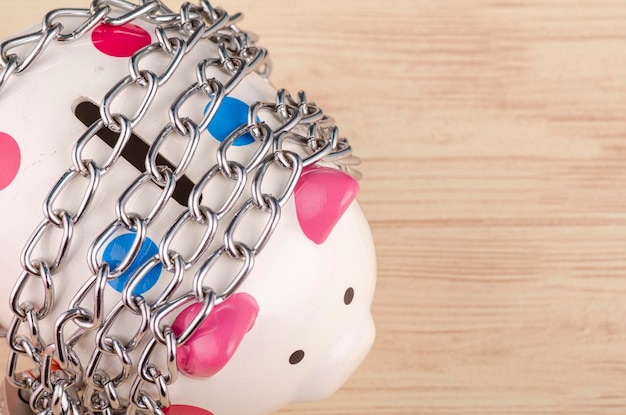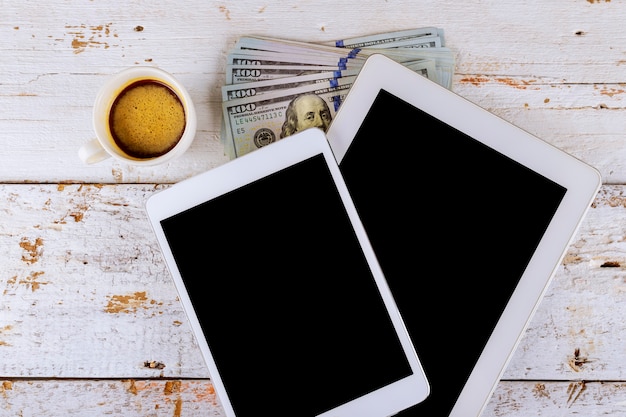Emergency Fund Essentials: How Much to Save for Unexpected Expenses

Emergency fund essentials include determining how much to save, typically three to six months’ worth of living expenses, to cover unexpected costs like medical bills, job loss, or car repairs, providing financial security and peace of mind.
Building an emergency fund is a cornerstone of sound financial planning. It’s your safety net for those unexpected curveballs life throws your way. The question often arises: what are the emergency fund essentials, and how much should you actually save to weather any financial storm?
Understanding the Basics of an Emergency Fund
Before diving into the specifics of how much to save, it’s vital to understand the fundamental purpose and nature of an emergency fund. It’s not just another savings account; it’s a dedicated resource to protect you from financial hardship during unforeseen circumstances.
An emergency fund is designed to cover unexpected expenses that could otherwise derail your financial stability. These expenses can range from sudden job loss to unexpected medical bills or urgent home repairs.

What Qualifies as an Emergency?
Defining what constitutes an emergency is subjective but crucial. Generally, an emergency is an unexpected, necessary expense that you can’t easily cover with your current income.
- Job Loss: Losing your primary source of income is a significant emergency.
- Medical Bills: Unexpected medical expenses can quickly deplete your savings.
- Car Repairs: If your car is essential for commuting, repairs are an emergency.
- Home Repairs: Fixing a leaking roof or a broken water heater falls under this category.
Distinguishing between an emergency and an impulse purchase is key to maintaining the integrity of your fund. A new gadget or a vacation is not an emergency.
In essence, grasping what constitutes a genuine emergency is pivotal in safeguarding your fund and ensuring it remains available for when you truly need it.
Calculating Your Ideal Emergency Fund Size
Determining the right size for your emergency fund is a personalized process, dependent on your individual circumstances, financial responsibilities, and risk tolerance. There’s no one-size-fits-all answer, but there are guidelines to help you calculate the right amount for you.
The most common recommendation is to save three to six months’ worth of living expenses. However, this range can vary based on several factors, making it important to assess your own situation.
Assessing Your Monthly Expenses
Start by calculating your essential monthly expenses. This includes rent or mortgage payments, utilities, groceries, transportation, insurance premiums, and any debt payments. It’s crucial to be thorough and realistic.
Add up all your unavoidable monthly costs to arrive at a total. This figure will serve as the baseline for calculating your emergency fund goal.
Factoring in Job Security and Income Stability
Your job security and income stability significantly influence how much you should save. If you work in a volatile industry or have an unpredictable income, you may need a larger emergency fund.
- Stable Employment: If you have a secure, stable job with a steady income, three months of expenses might be sufficient.
- Unstable Employment: If you are self-employed, work on commission, or are in a fluctuating industry, aim for six months or more.
- Multiple Income Streams: Having multiple income sources can reduce the need for a larger fund.
Considering these elements will enable you to fine-tune your savings target, making it more aligned with your particular employment landscape.
In summary, assessing your monthly expenses and factoring in your job security are vital steps in determining the optimal size of your emergency fund, ensuring you’re adequately prepared for unexpected financial challenges.
Where to Keep Your Emergency Fund
Choosing the right place to keep your emergency fund is just as crucial as determining the amount you need to save. Your fund should be easily accessible, secure, and ideally earn some interest while you’re not using it.
While stuffing cash under your mattress might seem tempting, it’s not practical or secure. Here are some suitable options for storing your emergency fund.

High-Yield Savings Accounts
High-yield savings accounts are a popular choice for emergency funds. They offer a better interest rate than traditional savings accounts while still providing easy access to your money.
These accounts are typically offered by online banks, which often have lower overhead costs and can, therefore, offer higher interest rates. Look for accounts insured by the FDIC for added security.
Money Market Accounts
Money market accounts are another safe and liquid option. They typically offer slightly higher interest rates than savings accounts, but may come with minimum balance requirements or restrictions on withdrawals.
Like high-yield savings accounts, money market accounts are usually FDIC insured, providing peace of mind.
Considerations for Accessibility
When choosing where to keep your emergency fund, consider how quickly you can access the money. While investments might offer higher returns, they’re not suitable for emergency funds due to potential market volatility and withdrawal delays.
The ideal account should allow you to withdraw funds within a day or two without penalties.
Ultimately, selecting the appropriate location for your emergency fund involves striking a balance between accessibility, safety, and modest interest gains, safeguarding your financial reservoir for when unexpected needs arise.
Replenishing Your Emergency Fund After Use
It’s tempting to breathe a sigh of relief once an emergency is over, but the job isn’t done once you’ve relied on your emergency fund. Replenishing it should be your next financial priority.
Refilling your emergency fund as quickly as possible ensures that you’re prepared for future unforeseen events. Here’s how to approach replenishing your emergency fund effectively.
Adjusting Your Budget
Start by revisiting your budget and identifying areas where you can cut back on spending. Temporarily reducing discretionary expenses can free up cash to replenish your fund more quickly.
Consider pausing non-essential subscriptions, dining out less frequently, or reducing entertainment expenses.
Setting a Savings Goal and Timeline
Establish a clear savings goal and a realistic timeline for replenishing your emergency fund. Having a target will keep you motivated and on track.
Break down the total amount you need to save into smaller, manageable monthly targets. Automate your savings by setting up regular transfers from your checking account to your emergency fund.
Treating it Like a Debt
Consider treating the amount you withdrew from your emergency fund as a debt you owe yourself. This mindset can help you stay disciplined and committed to replenishing the funds.
Make replenishing your emergency fund a top financial priority, just as you would with any other debt repayment.
In conclusion, prioritizing the replenishment of your emergency fund after use is a crucial step in maintaining financial security, ensuring you’re always prepared for life’s unexpected challenges.
Common Pitfalls to Avoid With Your Emergency Fund
While having an emergency fund is a smart financial move, there are several common pitfalls to avoid to ensure it serves its intended purpose effectively. Mismanaging your emergency fund can undermine its value as a financial safety net.
Avoiding these common mistakes can help you maintain a healthy and effective emergency fund.
Using it for Non-Emergencies
One of the biggest mistakes is using your emergency fund for non-emergency expenses. This depletes your funds and leaves you vulnerable when a true emergency arises.
Before tapping into your emergency fund, ask yourself if the expense is truly unexpected, necessary, and unavoidable.
Not Replenishing After Use
Failing to replenish your emergency fund after using it is another common mistake. This leaves you unprepared for future emergencies.
Make replenishing your fund a top financial priority and adjust your budget accordingly.
Keeping it Too Accessible
While your emergency fund should be easily accessible, keeping it too accessible can be tempting to dip into it for non-emergency purposes.
- Avoid Overdraft: Don´t keep it on your checking account without any control.
- Specific Account Separated: Have a specific account separated.
Ignoring Inflation
Failing to adjust your emergency fund for inflation can erode its value over time. As the cost of living increases, your emergency fund should also grow to maintain its purchasing power.
Periodically review your emergency fund to ensure it still covers three to six months of living expenses, accounting for inflation.
In summary, diligently avoiding these frequent errors is vital in preserving the strength and effectiveness of your emergency fund, assuring its availability when genuine crises strike.
Integrating an Emergency Fund With Other Financial Goals
An emergency fund is a critical component of a well-rounded financial plan. It complements other financial goals, such as investing, saving for retirement, and paying off debt.
Integrating your emergency fund with your other financial objectives can create a more cohesive and resilient financial strategy.
Prioritizing Emergency Savings
When starting your financial journey, prioritize building your emergency fund before aggressively pursuing other goals. Having a financial safety net in place can prevent you from derailing your progress due to unexpected expenses.
Once you have a basic emergency fund (e.g., one month of expenses), you can start balancing your savings with other goals, such as debt repayment or investing.
Balancing Debt Repayment and Emergency Savings
Many people struggle with the decision of whether to prioritize debt repayment or emergency savings. A balanced approach is often the most effective.
Focus on paying off high-interest debt while simultaneously building your emergency fund. Once the high-interest debt is paid off, you can accelerate your emergency savings.
Incorporating Investing
After establishing a fully funded emergency fund, you can allocate more resources towards investing. Your emergency fund provides a cushion, allowing you to take on more risk with your investments.
Consider setting up automated transfers to your investment accounts after funding your emergency savings.
In essence, strategically integrating your emergency fund with your broader financial objectives ensures a more secure and adaptable financial framework, allowing you to navigate uncertainties while pursuing long-term prosperity.
| Key Point | Brief Description |
|---|---|
| 💰 Determine Savings Amount | Calculate 3-6 months of living expenses for financial security. |
| 🏦 Choose Right Account | Opt for high-yield savings or money market accounts for accessibility and interest. |
| 🔄 Replenish After Use | Prioritize refilling your fund to prepare for future emergencies. |
| 🚫 Avoid Common Pitfalls | Don’t use the fund for non-emergencies or neglect to replenish it. |
Frequently Asked Questions About Emergency Funds
▼
An emergency fund provides a financial safety net to cover unexpected expenses without relying on credit cards or loans, preventing debt accumulation and promoting financial stability.
▼
An emergency expense is an unexpected, necessary cost that you can’t cover with your current income. Examples include medical bills, job loss, or urgent home repairs.
▼
Aim to replenish your emergency fund as quickly as possible. Adjust your budget to free up cash and set a savings goal to stay motivated and on track.
▼
It’s not recommended to invest your emergency fund in volatile assets. Choose safe, liquid options like high-yield savings accounts or money market accounts for easy access.
▼
Review your emergency fund at least annually to ensure it still covers three to six months of living expenses, accounting for inflation and changes in your financial situation.
Conclusion
Establishing and maintaining an emergency fund is a cornerstone of financial resilience. By understanding the essentials, calculating your ideal savings amount, and avoiding common pitfalls, you can build a safety net that protects you from life’s unexpected challenges, fostering financial security and peace of mind.





